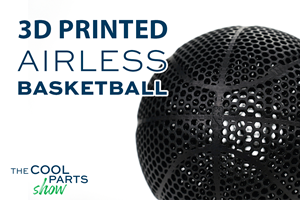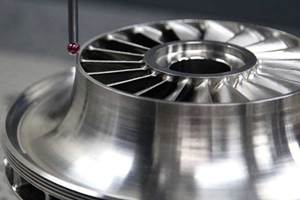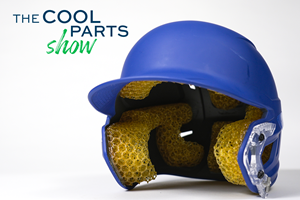AM Brings Down the Wall Between Manufacturing and Design
In additive manufacturing, design and manufacturing blend together. They can’t be separate if AM is to realize its promise.
When I was studying engineering, the College of Engineering had its classrooms and facilities in one building and the College of Design, Architecture, Art and Planning was located in another. Academically, students in engineering and students in “DAAP” (said as one word, “dap”) didn’t have much contact with one another.
Little did we future engineers know that another divide was coming. Out in the world, engineering itself is split by a roughly equivalent internal separation. Design engineers conceive products and manufacturing engineers produce them, frequently with too little communication between the two. Because of the potential for wasted cost if a tolerance is too tight or a feature is too difficult to make, it is considered a victory if design engineering and manufacturing engineering can just come to the table to talk.
Now, enter additive manufacturing (AM). In additive, even this separation—different departments occasionally talking—is too much distance. In additive, design and manufacturing blend. AM’s freedom of geometry means physical part-making is an aspect of design exploration. And AM’s freedom from dedicated tooling means the work of improving, refining and tweaking a design can continue well after manufacturing is underway. In AM, the separation between manufacturing and design can and must end, and various stories we’ve recently posted are all about that wall of separation coming down.
GM is experiencing this change. The car maker expects to benefit from additive manufacturing as a means of production, but doing so will mean validating AM parts according to auto-industry requirements. The prove-out process necessary for this validation will rely on efficient workflow and interaction between digital design and physical part-making.
The faculty of Penn State University sees this change as well. A new AM master’s degree program here is, in philosophy and in name, a degree in additive manufacturing and design. Incorporating significant design content into the curriculum was recognized as being essential for equipping students to realize additive’s promise.
And Kimura Foundry is helping companies explore what it is like to innovate after the wall has fallen. Metal casting is a process characterized by legacy design because of its reliance on hard tooling, but Kimura uses no hard tooling. All its sand molds are made via AM, meaning customers can cast many different designs at once, change the design of an established part at will, and still enjoy short lead times.
Other stories exploring how AM and design interrelate involve new potential for hip implants, the pursuit of victory in Formula 1 and a chef’s knife customized to its user.
The last item in particular is noteworthy. The knife is an AM product held in the hand, a product for a consumer. It is for a high-end consumer to be sure, but the product is a harbinger of what is to come. With additive today, design optimization often focuses purely on functionality. But in the future, we will all routinely touch, buy and interact with products made additively, and the success of these products will in part be determined by their visual and tactile appeal. It will be worth many design refinements to pursue this appeal, and the freedom of AM will allow for this exploration. Thus, in the future, the integration between manufacturing and design will need to go farther still. The wall of separation from artistic design will also come down. The Engineering and DAAP graduates will come together after all.
Related Content
Airless Basketball Shows Promise of 3D Printed Lattices: The Cool Parts Show Bonus
Successfully matching the performance of a standard basketball demonstrates the control possible over the mechanical properties of digital materials.
Read MoreVelo3D Founder on the 3 Biggest Challenges of 3D Printing Metal Parts
Velo3D CEO and founder Benny Buller offers this perspective on cost, qualification and ease of development as they apply to the progress of AM adoption in the future.
Read More3D Printed Lattices Replace Foam for Customized Helmet Padding: The Cool Parts Show #62
“Digital materials” resulting from engineered flexible polymer structures made through additive manufacturing are tunable to the application and can be tailored to the head of the wearer.
Read More3D Printed Cutting Tool for Large Transmission Part: The Cool Parts Show Bonus
A boring tool that was once 30 kg challenged the performance of the machining center using it. The replacement tool is 11.5 kg, and more efficient as well, thanks to generative design.
Read MoreRead Next
Alquist 3D Looks Toward a Carbon-Sequestering Future with 3D Printed Infrastructure
The Colorado startup aims to reduce the carbon footprint of new buildings, homes and city infrastructure with robotic 3D printing and a specialized geopolymer material.
Read More3D Printed Polymer EOAT Increases Safety of Cobots
Contract manufacturer Anubis 3D applies polymer 3D printing processes to manufacture cobot tooling that is lightweight, smooth and safer for human interaction.
Read MoreBike Manufacturer Uses Additive Manufacturing to Create Lighter, More Complex, Customized Parts
Titanium bike frame manufacturer Hanglun Technology mixes precision casting with 3D printing to create bikes that offer increased speed and reduced turbulence during long-distance rides, offering a smoother, faster and more efficient cycling experience.
Read More


















